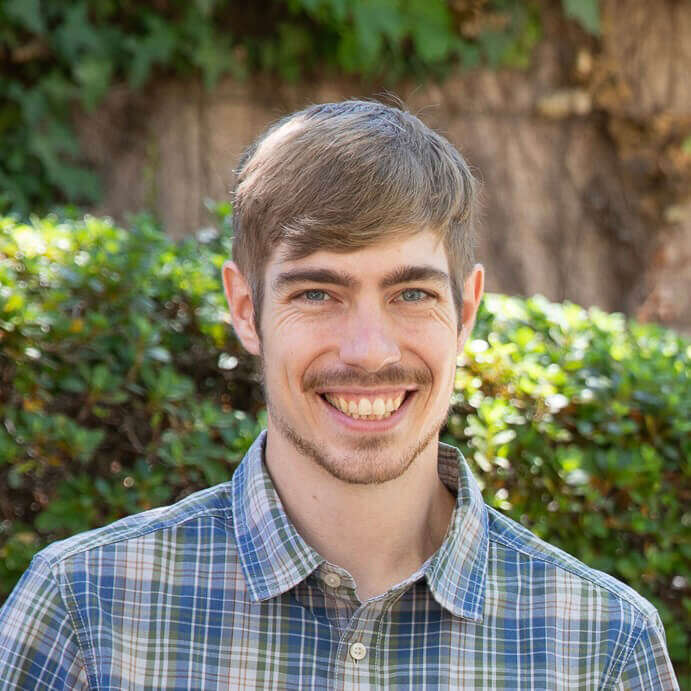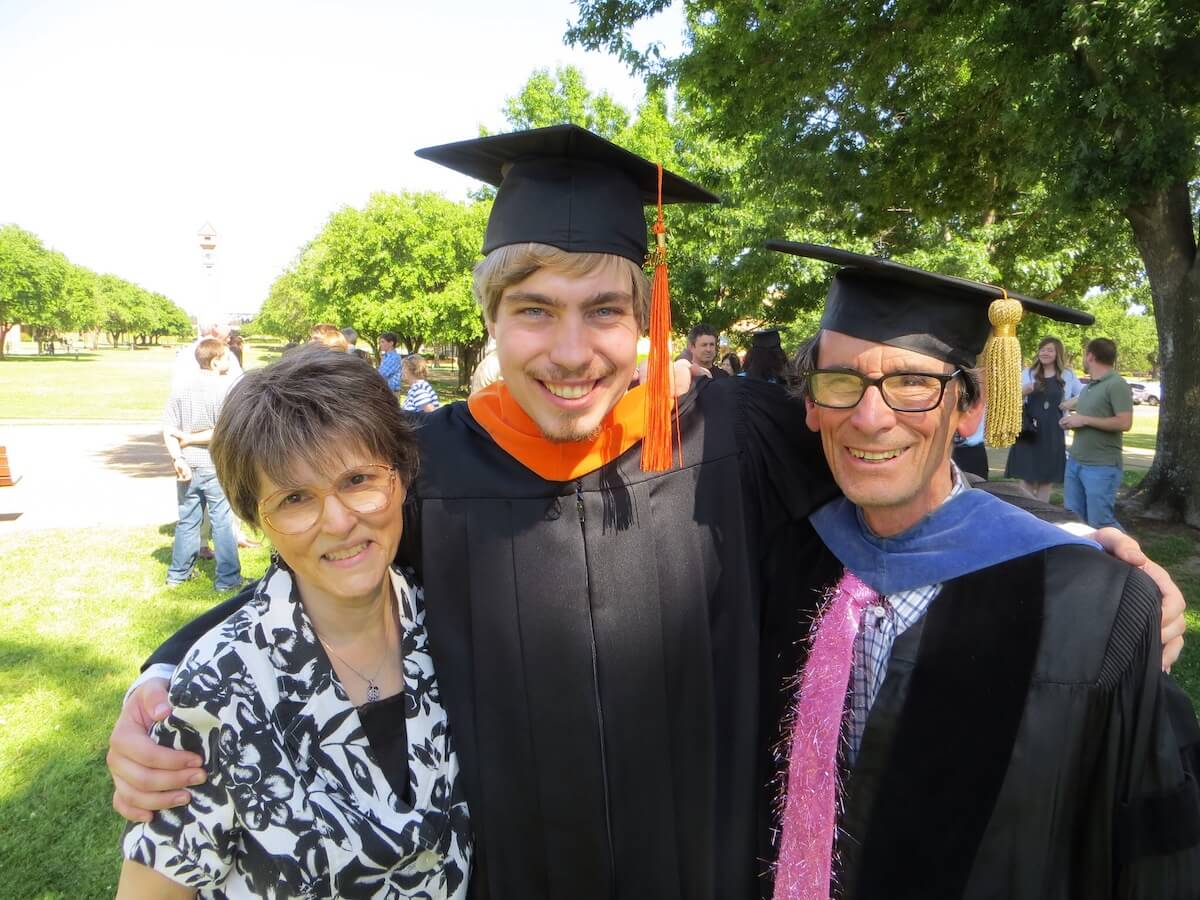 Josh Brake, Ph.D.
Josh Brake, Ph.D.
Electrical Engineering ('13)
Assistant Professor, College of Engineering, Harvey Mudd College, California
"You know Brother LeTourneau, God needs businessmen as well as preachers and missionaries." These words, spoken to R.G. amidst his search for calling and purpose, changed his life. They changed mine too.
Needing faithful servants in a variety of vocations is also connected to another idea that has significantly shaped me: Dr. Graff's devotional on the two-pot vs. one-pot system. Dr. Bill Graff, who faithfully served as a professor in LeTourneau’s engineering department for 42 years, was famous for many things, including his ties, fun-loving and quirky personality, tough grading, and kindness. However, in terms of his long-term influence on students, I’m not sure anything will top his library of short, before-class devotionals. These thought-provoking lessons cultivated questions about what it means to live a faithful life, memorably tying Biblical concepts together with engineering analogies.
The idea of the one-pot system, which emphasizes the importance of viewing all aspects of life as holy, has deeply formed my perspective on faith, daily life, and career choices. In the artificially dichotomous view of the two-pot system, the sacred and secular are separate and non-overlapping sets of activities. Things like reading scripture, prayer, and church attendance are squarely in the spiritual pot while the day-to-day activities of work, exercise, play, cooking, and cleaning the house are categorized as secular. Through this lens, the life of the faithful Christian is one of competition. Is it holier for me to eat and exercise or should I spend my time praying, serving others, and meditating on scripture?
In stark contrast, the one-pot system rejects the false divide between the sacred and secular and sees the world through an all-encompassing lens. In the words of Abraham Kuyper, “There is not a square inch in the whole domain of our human existence over which Christ, who is Sovereign over all, does not cry: ‘Mine!’” ("Sphere Sovereignty" Free University inauguration address, 20 Oct. 1880)
My experience at LeTourneau planted the seeds of this integration that have been bearing fruit in my life ever since. The Supplemental Instruction (SI) program was particularly instrumental in helping me work out what it means to be in partnership with God. Through the SI program, I discovered gifts God had given me to steward and saw how their exercise could not only be fulfilling for me but also offered in ministry to others.
SI is an academic support model built on peer learning. In contrast to other modes of support such as office hours offered by the course professor or tutoring sessions for specific students, SI sessions are organized and led by students who have previously taken a course and demonstrated an aptitude for the material. SI leaders typically offer two to three hours of dedicated support each week. The format of the sessions is varied based on the course and the needs of the students who attend, but in most of my sessions, I would give a brief review of the key concepts from the lectures that week and then work on practice problems or answer questions about the assigned homework.
While the main purpose of the program is to offer support to students currently enrolled in the course, they also provide significant opportunities for budding teachers to test their wings and prototype a career in education. This was certainly my experience as an SI leader. After taking Electric Circuits with Dr. Graff in my first semester, I heard from one of my floor-mates about an opening for a new Supplemental Instruction leader for Electric Circuits I the next semester. After meeting with Debbie McGinness, who was in charge of coordinating the SI program, I was ready to explore what life was like teaching in front of a room.
Circuits I with Dr. Graff was no picnic. This is the guy, after all, who had a t-shirt with the line, “I fight grade inflation!” emblazoned on the front. Truer words have never been spoken. This certainly put me in a position of high demand with plenty of students looking for help understanding the material and preparing for Dr. Graff’s “surprise” pop quizzes (we quickly discovered that the only surprise was that we would have a pop quiz every day we walked into class).
Getting the chance to teach circuits as an SI leader was extremely meaningful. Not only did it provide me with a prototype experience for teaching but it also led to some of the most meaningful mentoring relationships of my time at LeTourneau, both with Dr. Graff and my research advisor, Dr. Seung Kim, who taught the class in a different semester. An added perk of being an SI leader was being paid to sit through the course lectures: I was able to see the circuits course material many times over, and I got a front-row seat to Dr. Graff’s devotionals year after year.
Starting out as an SI was a bit of an intimidating experience. Anyone who has gone from sitting in the audience to standing in front of the blank board will identify with the experience. But in the midst of the intimidation, I felt a deep sense of joy rooted in helping out fellow students as well as the deepening of my own knowledge and mastery of the course material.
After a few semesters of teaching circuits, I noticed a gap between what students took away from the material presented in lecture and what was available in the textbook. I decided to try to create something to fill the gap. I condensed the material from my mini-review lectures that I gave at the beginning of my SI sessions into a series of tutorial-style problem-solving guides. My goal was to help students not only understand the theory of what was going on but visualize the step-by-step problem-solving process. After about a semester of work and some long weekends, I had the outline of my first “textbook,” The Engineer’s Guide to Circuit Analysis. While it was only about 50 pages long and the product of an eager and naïve undergraduate, Dr. Graff was my biggest cheerleader and even connected me with his contacts at McGraw-Hill to help me self-publish it. I had discovered a love of teaching, caringly cultivated in a community that not only encouraged me to grow but gave me chances to learn by doing.
The opportunity to teach as an undergraduate deeply shaped my path, ultimately leading to grad school. After graduating from LeTourneau and marrying my high school sweetheart in our hometown of Trumbull, CT, we departed on a cross-country journey to Southern California where I started my PhD program in Electrical Engineering at Caltech in Pasadena, CA. We stopped in Longview on our trip for me to defend the thesis for my Master of Science in Engineering at LeTourneau before continuing west.

My experience at LeTourneau also offered me an opportunity in the formative years of undergrad to understand how I might faithfully steward my gifts in service to the Lord. "Every Workplace, Every Nation" is both prescriptive and descriptive. As children of God, we are called to extend His grace throughout our spheres of influence while at the same time realizing He is already present there. This is, in a way, living out Kuyper's claim: it all belongs to God.
After finishing up my Ph.D. at Caltech in 2019, I started a faculty position as an Assistant Professor of Engineering at Harvey Mudd College, a small liberal arts college in Claremont, CA, about 30 miles east of Los Angeles. My core values as a faculty member are deeply shaped by my experience at LeTourneau. I would not be who I am today without the role models who showed me what it looks like to be a loving and supportive faculty member who puts students first. Dr. Graff showed me how to love students well without lowering standards. Dr. J. Kim showed me how to think big, embrace failure, and work hard for God. Dr. Leiffer showed me how to lead with kindness, compassion, and gentleness. And Debbie McGinness showed me how to walk alongside, support, and care for students.
As an electrical engineer who spent my Ph.D. studying optics, there are few concepts more beautiful to me than coherence. In short, coherence is about the synergistic combination of multiple individual contributions. Seeing the world as a one-pot system is the key to a coherent Christian life. It is both deeply satisfying and liberating. It frees us from needing to agonize about how we divide our time and helps us to see that God can be present even (and maybe especially) in what we view as mundane.
As Dorothy Sayers summarizes in her essay "Why Work?," "[W]ork is not, primarily, a thing one does to live, but the thing one lives to do. It is, or it should be, the full expression of the worker’s faculties, the thing in which he finds spiritual, mental and bodily satisfaction, and the medium in which he offers himself to God." The question is less about what we do with our careers and rather about how we faithfully partner with God in the places he calls us.